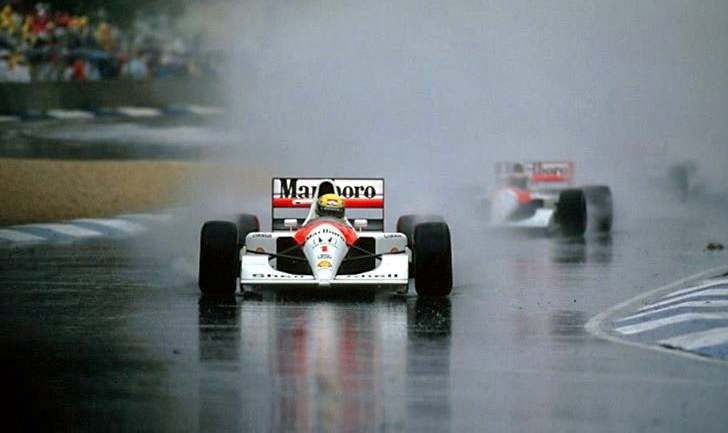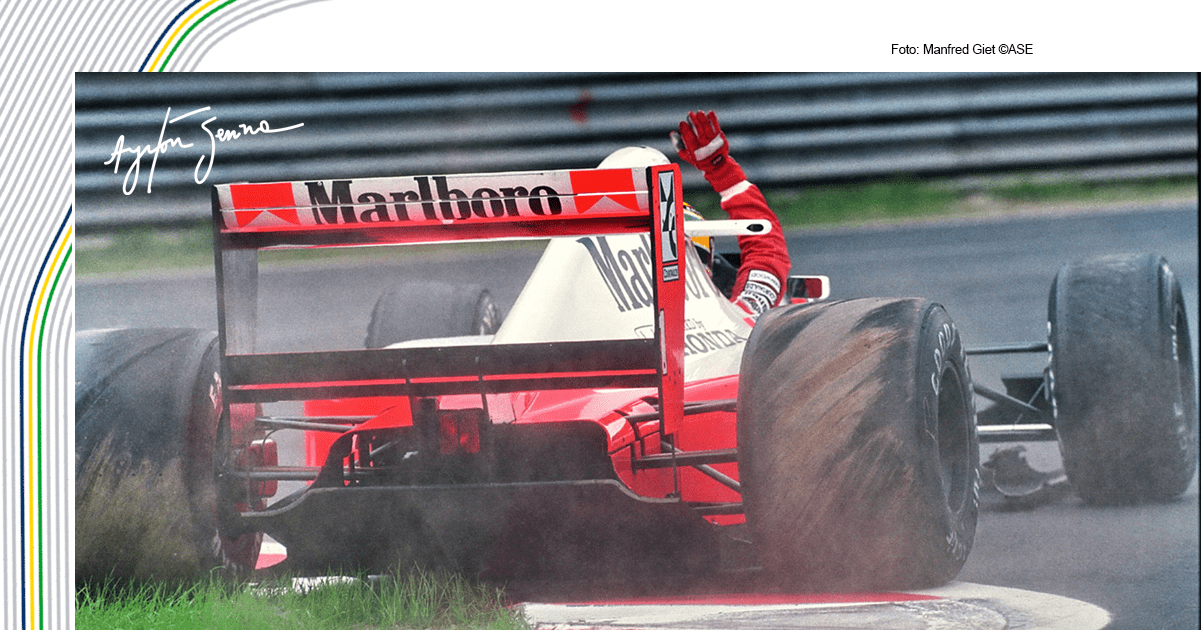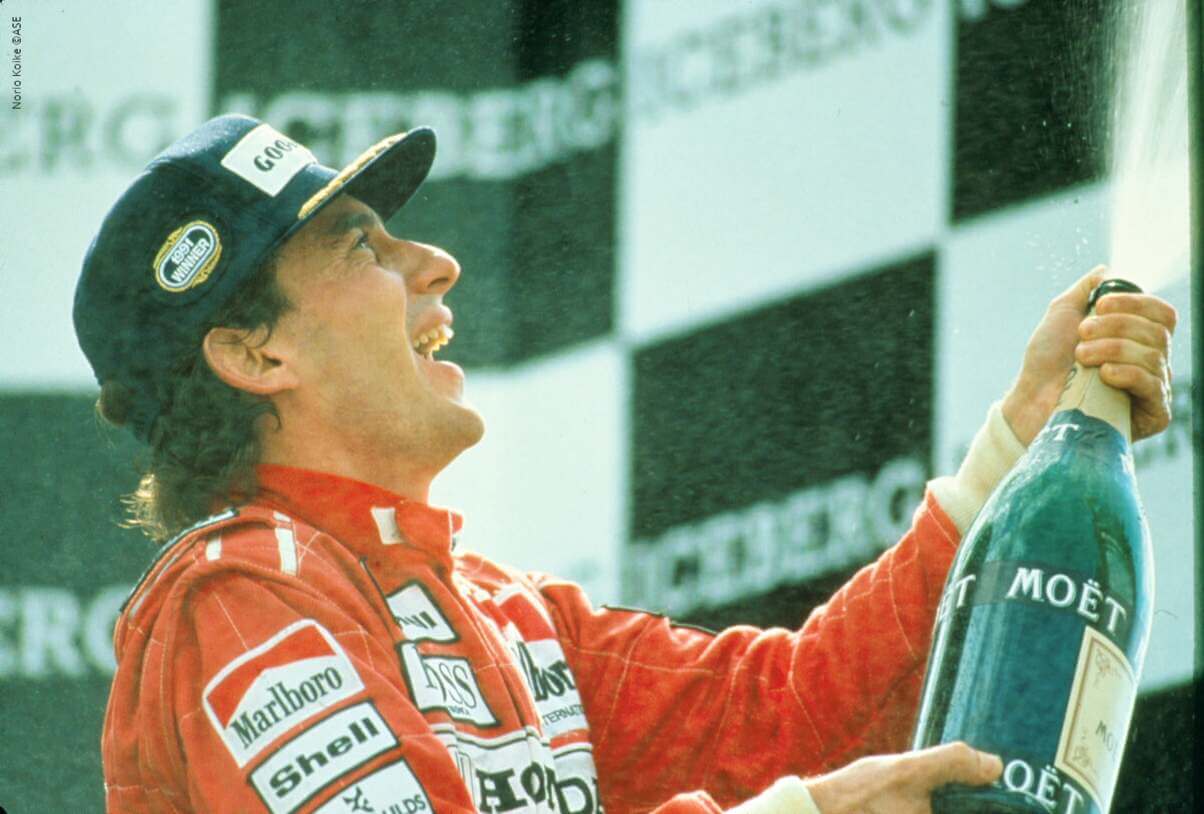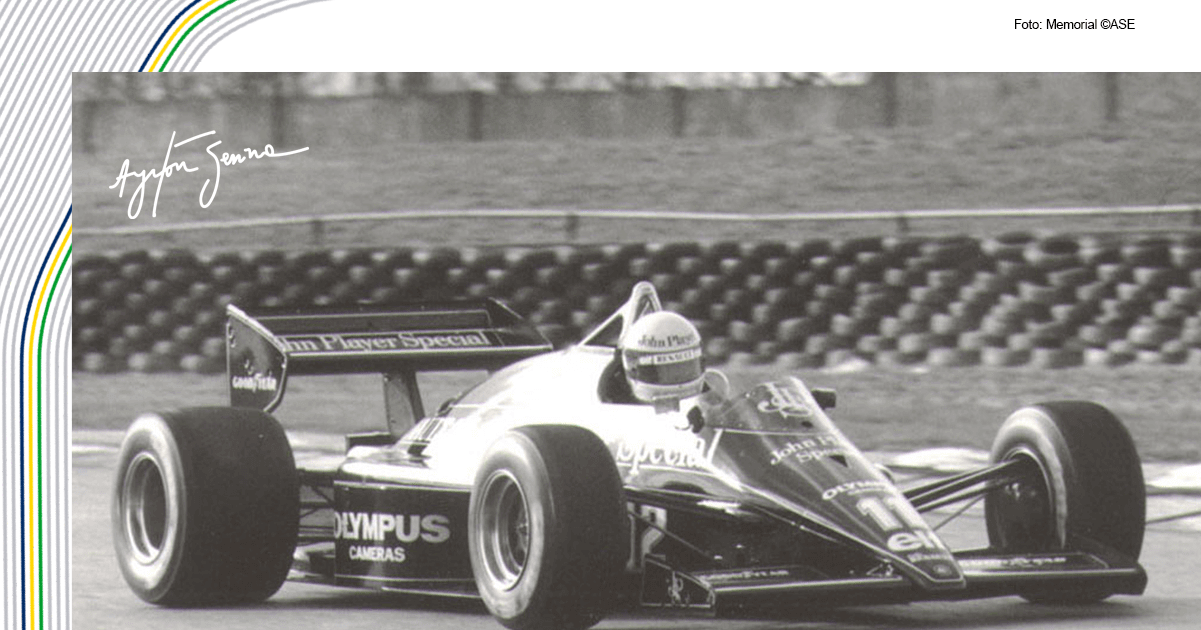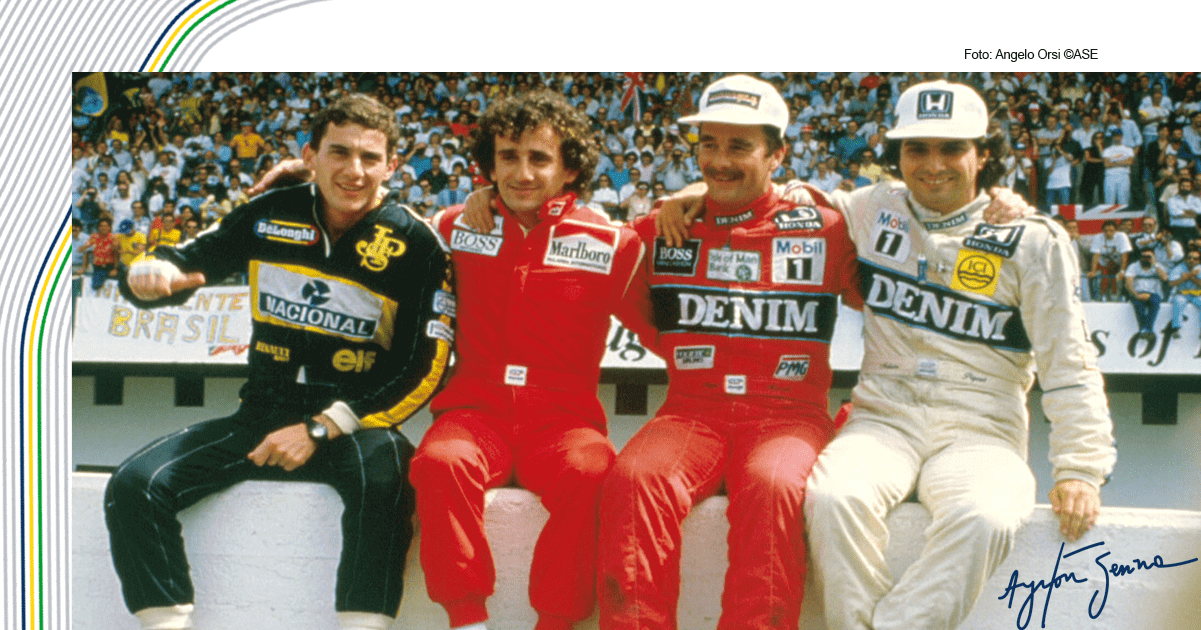The 2018 F1 season comes to an end this weekend, in Abu Dhabi, in the United Arab Emirates. Over the last ten years, only five championships were decided in the final race of the season: 2008, 2012, 2014 and 2016. In 2009, 2011, 2013, 2015, 2017 and this year, the champion was known before the last grand prix.
A three-time F1 world champion, Ayrton Senna clinched all of his titles in Suzuka, at the Japanese GP, the next-to-last race in the 1988, 1990 and 1991 seasons. In all three occasions, the Brazilian went to Austrialia for the year’s final race as the reigning champion.
Take a look back at Senna’s races immediately after winning a title.
1988
After Ayrton’s first world title, McLaren was still celebrating, especially because the team was closing out a near-flawless season, with 14 wins in 15 races up to that point. During the qualifying sessions in Australia, Senna’s challenge was to take the pole position from Alain Prost, who had been the quickest in the Friday practice sessions by just 0s153. On the following day, Senna took the pole with a time of 1min17s748, just 0s132 ahead of the Frenchman.
It was Senna’s 29th pole position in his career and his 13th in 16 GPs that year, a record in the category that would only be beaten by Nigel Mansell in 1992. With 8 wins in the season and 14 in his career so far, Senna was just one triumph away from scoring the 50th win for Brazil in Formula One history. But that would have to wait until the following season, in San Marino.
At the start, Prost took the lead and Senna fell to second place. Senna However, had a few gearbox issues throughout the race, and wasn’t able to catch up with the Frenchman, who led the race to the end. Senna finished in second place, wrapping up the year with 90 points, while his rival had 87. McLaren and Senna could keep celebrating on the streets of Adelaide.
1990
In 1990, Senna won his second world title after a series of controversial decisions in battles with Prost for two consecutive years. The following race would, once again, take place in Adelaide, Australia, marking the 500th F1 GP in history. In 2019, Formula One will reach its 1000th GP, in China.
On the day the starting grid was decided, Ayrton took the pole position. He would be starting alongside Gerhard Berger, on the first row. On Sunday, Senna dominated the race until the 62nd lap. While Nelson Piquet, Nigel Mansell and Alain Prost fought for second place, Ayrton had a braking mishap and his McLaren hit a tire barrier. Despite the result, the Brazilian finished the season with six wins and 78 points, seven more than Prost. The Frenchman was the runner-up, with five wins that year.
1991
Senna arrived in Adelaide with the title already clinched, since he had beaten Nigel Mansell in the fight for the title in Suzuka. After handing the win in Japan to his teammate, Berger, Ayrton wanted to win in Australia. On Saturday, Senna had his 60th pole position ever. Berger, his teammate, had the second best time, rounding out the first row.
In the race, Senna had an extra challenge: He had to help McLaren win the Constructors’ Championship, in which Willams had an 11-point lead. Both teams would be fighting for each point in Adelaide. “I’m not here just to celebrate; I’m here to do my best. The season isn’t over until after this grand prix”, said Senna before the race.
On Sunday, the race started in the middle of a thunderstorm. It was raining so hard drivers had to make a super-human effort to stay on the track. Ayrton was the only leader over the race’s 16 laps. Mansell ended up hitting a wall and Berger spun out twice on the same lap. Brazilian Maurício Gugelmin hit the wall of the boxes and almost ran over two marshals, causing a serious accident.
Since an agreement about a second start wasn’t reached, the race was suspended and drivers were awarded half the points according to their position on the 14th lap. Senna was in first, Mansell in second and Berger rounded out the podium in third. To this day, the ’91 Australian GP is considered shortest race in F1 history.
With the result, McLaren achieved its goal. The team finished the Constructors’ Championship with 139 points, while Williams was the runner up, with 125 points.
